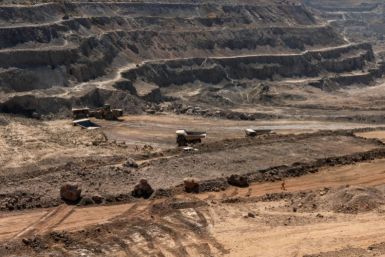BHP hybrid bond successful despite current environment

BHP Billiton sold a transaction of US$6.5 billion-equivalent [AU$8.9 billion] on Wednesday through one of the largest hybrid bonds sale ever seen in the corporate sector.
In a breakdown reported by Bloomberg, the Melbourne-based mining company sold US$2.25 billion [AU$3 billion] of dollar-denominated hybrid notes due in 2075 that can be bought back after 10 years. It also had US$1 billion [AU$1.4 billion] of similar maturity that can be repurchased after just five years. It also sold 2 billion euros [AU$3.1 billion] of hybrids in two separate tranches and 600 million pounds [AU$1.3 billion] of U.K. debt. The euro and pound issues each have tenors of more than 60 years with the possibility of early redemption by the issuer.
Many had doubted if the world’s largest mining company could pull off a hybrid trade given the nosedive in commodity prices.
"BHP is a strong credit but it operates in a weak sector," Eve Tournier, head of pan-European credit at investment management firm Pimco, told Reuters. "There were some concerns that it wouldn't be able to issue hybrids in the current environment."
BHP’s surprising success showed that investors are still willing to add risk in the battered metals and mining sector at the right price.
The impressive sale of BHP comes after its unimpressed stance on Glencore’s and other miners’ production cuts. BHP marketing president Arnoud Balhuizen said that mine closures would not make a significant difference because most of the mines being shut down are not profitable anyway.
Rich reserves for the future
Balhuizen also said during a media briefing that BHP Billiton prioritises the flow of commodities and products, payment of customer and honouring of contracts.
Amur Minerals Corporation (London AIM: AMC), for instance, has been doing particularly well on its principal asset, the Kun-Manie project, located in Russia’s Amur Oblast region.
In its most recent status report for 2015, Amur holds a total US$8.3 million [AU$11.4 million] cash reserve and a net profit amounting to US$2.9 million [AU$4 million]. Reports have dubbed Amur Minerals “investor-attractive” and “one of the better-funded junior exploration companies.” Amur has been strong and steady as the Kun Manie sulphide nickel copper reserve continues to yield better than expected results.
“The first half of 2015 saw the achievement of a major milestone for Amur with the award of the Production Licence. We thank the shareholders for their continued support and perseverance,” Amur Minerals CEO Robin Young stated. Most recently, Amur Minerals made its presence strongly known in the 12th Moscow Minex conference where it has been a regular participant in every annual outing of the event.
Amur’s steadfast growth amidst industry unpredictability sets it on a smooth sailing road for the rest of 2015. Meanwhile, BHP Billiton has been riding out the volatility of the mining market, but this well-received transaction can be the much-needed boost for the corporate bond market.
Contact the writer at feedback@ibtimes.com.au, or let us know what you think below.






